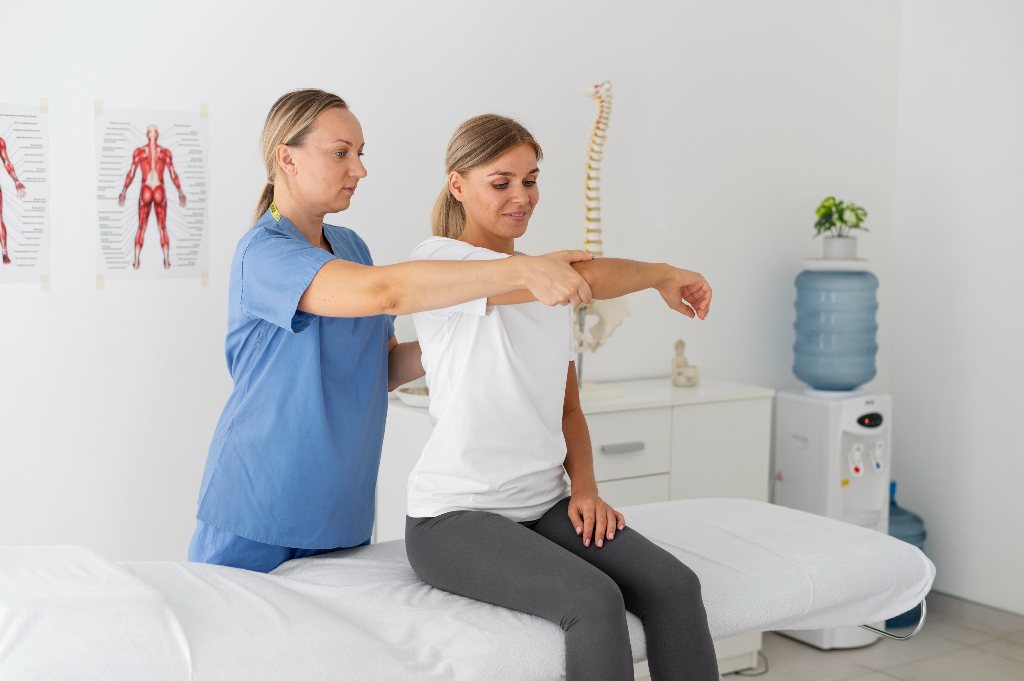Chronic pain is a health issue in and of itself, one which affects around 50 million adults in the United States.
Fortunately, there are many ways to treat chronic pain. Depending on your particular situation, however, some methods may be better than others. If you are looking for pain management alternatives to surgery or heavy drugs, check out this list of 10 more natural ways to get pain relief.
1. Acupuncture
Acupuncture is an ancient Chinese practice that involves inserting tiny, specialized needles into the skin to stimulate certain points of the body. This is thought to help reduce inflammation and improve blood circulation, which can help treat a variety of conditions, including pain in the knees, lower back, and neck, as well as pain caused by migraines and fibromyalgia.
If you’re considering acupuncture for pain relief, it is very important that you make sure you are working with a qualified practitioner. An educated and experienced practitioner can properly assess your condition and recommend the best course of treatment for your needs.
When administered correctly, acupuncture is generally considered safe, with few side effects. If applied incorrectly, however, side effects may include nerve damage and infection. Acupuncture can also result in increased bleeding and allergic reactions, which is why it is not recommended for people who are pregnant or have a bleeding disorder, and why you should let your practitioner know if you have any medical conditions or allergies before you begin treatment.
2. Heat and Ice
Applying heat or cold to the affected area is a common and effective way to manage pain, especially pain that results from injury. Applying heat can help to reduce muscle tension, improve circulation, and relax the body. Cold therapy, on the other hand, can help to reduce inflammation and numb the area.
There are a variety of ways to apply heat or cold. You can use a heating pad, hot water bottle, or even a warm bath. For cold therapy, you can use an ice pack, cold compresses, or a bag of frozen vegetables.
Be sure to use the right temperature for your needs and not be in direct contact with the heat or cold source. Also, time it correctly — heat should be applied for 15-20 minutes at a time and cold for 10-15 minutes. Too much cold or too much heat can result in ice burns or regular burns, as well as numbness, itchiness, and blisters.
3. Yoga
Yoga is another ancient practice that combines physical postures, breathing exercises, and meditation. It is believed to help reduce stress, improve flexibility, and promote mental and physical wellbeing. Studies have also found that it can help reduce lower back and neck pain.
Yoga can be easily adapted to suit individual needs. Gentle, restorative yoga poses can help to reduce tension in the muscles and improve range of motion. But if you’re considering yoga for pain relief, make sure to listen to your body and stop if you experience any discomfort. Yoga done incorrectly can result in muscle strain and injury, and therefore increase your pain.
4. Massage Therapy
Massage therapy is a popular way to manage pain. It involves manipulating the muscles and soft tissues in the body to reduce tension and promote relaxation. Massage therapy also increases blood flow to the affected area, which can promote healing.
If you’re considering massage therapy for pain relief, it’s important to make sure you’re working with a qualified practitioner that can avoid causing injury.
Also, a qualified massage practitioner will be able to recommend the best massage treatment for your particular pain. There are many different kinds of massage therapy, from deep tissue massages to massage more focused on physical therapy, and an experienced professional will make it more likely that you’ll be able to find a type of massage that works for you.
5. Turmeric
Turmeric is a popular spice used in many dishes — curry being the most well-known. Turmeric is believed to have many health benefits due to its ability to reduce inflammation in the body. Due to this quality, it can reduce pain intensity for people living with arthritis. It is also believed to help reduce pain associated with menstrual cramps, ulcers, and indigestion.
Turmeric can be used in a variety of ways. You can take it in supplement form, or add it to your food. It can also be used topically, by mixing it with a carrier oil and applying it to the affected area.
It is important to note that turmeric can interact with certain medications, so it is important to speak to your doctor before taking it. It is also important to make sure you are taking the right dose for your needs. Too much turmeric can cause rashes, headaches, and diarrhea.
6. Cloves
Cloves are another popular spice used in food. These flower buds are also believed to have many health benefits, and have traditionally been used for many years to reduce pain associated with toothaches.
Researchers believe that cloves might be able to reduce inflammation and improve pain intensity for people living with arthritis. They can also be an effective remedy for indigestion, nausea, and headaches.
Like turmeric, cloves can be taken as supplements or added to food. Cloves can also be used topically as an oil or a paste. Too much of it can cause allergic reactions, skin irritation, and possible liver problems, so care should be taken.
7. Ginger
Like cloves and turmeric, ginger is a popular food ingredient that has many health benefits. It also reduces inflammation and can be used as a treatment for discomfort resulting from digestive issues. Studies also suggest that ginger can help reduce exercise-related inflammation in the muscles.
Ginger can be ingested in food and teas, or as a supplement. Like any other supplement, however, ginger can cause side effects and react with existing medications, so you should consult with a doctor before taking too much of it.
8. Essential Oils
There are many essential oils available, and they are a popular way to manage pain. Some of the most popular options for pain relief and inflammation reduction include:
- Lavender oil
- Eucalyptus oil
- Peppermint oil
- Rosemary oil
If you are focusing on pain relief, make sure you are using the right oil for your needs. Different oils have different properties and effects. For example, lavender is believed to help reduce stress and promote relaxation, while peppermint is believed to help reduce inflammation and numb the area.
When you use oils for pain relief, make sure you use them correctly. Essential oils can be toxic when ingested, so only use them topically, and only when they have been diluted with a carrier oil. Undiluted oils can result in rashes and skin irritation.
9. CBD
CBD, an oil derived from the cannabis plant, is a popular natural remedy for pain. Many studies suggest that it can reduce inflammation and reduce the pain intensity for people living with chronic pain, including pain associated with conditions like multiple sclerosis.
CBD can also be used in a variety of ways — as an oral supplement, a topical solution, or as an additive to food or drink.
Like many of the remedies on this list, CBD can interact with certain medications, so it is important to speak to your doctor before taking it. Work with a medical professional to make sure you are taking the right dose and using the right delivery method for your needs.
10. Shockwave Therapy
Shockwave therapy is a new form of treatment that uses sound waves emitted by a special device to reduce pain. This type of therapy reduces inflammation and improves blood flow to the affected area, which promotes healing and helps with painful conditions such as tendinitis, arthritis, plantar fasciitis, and other musculoskeletal conditions.
Shockwave therapy is fast-acting and has few side effects. However, it is important to note that it may not be suitable for everyone, and you should first consult with your doctor to see if it is a good option for you.
Finding natural pain relief can be a challenge, but there are many options available to help manage pain. Keep in mind, however, that some types of pain may require more invasive treatment, such as surgery, to treat the underlying condition.
If you’re looking for natural pain relief, turn to SoftWave to find a provider of alternative pain relief treatments. With the help of our shockwave therapy, you can find the relief you need to get back to living your life.



